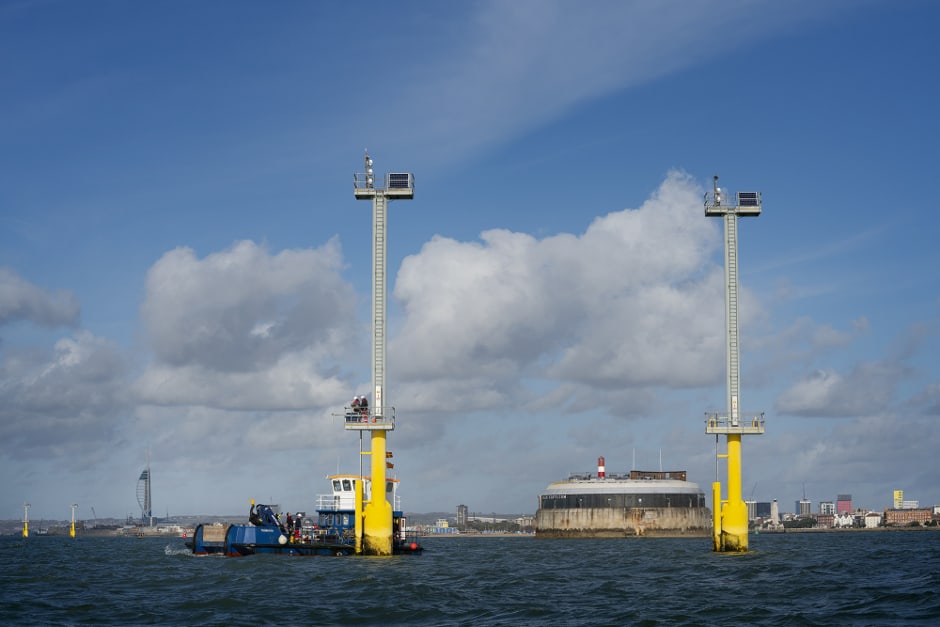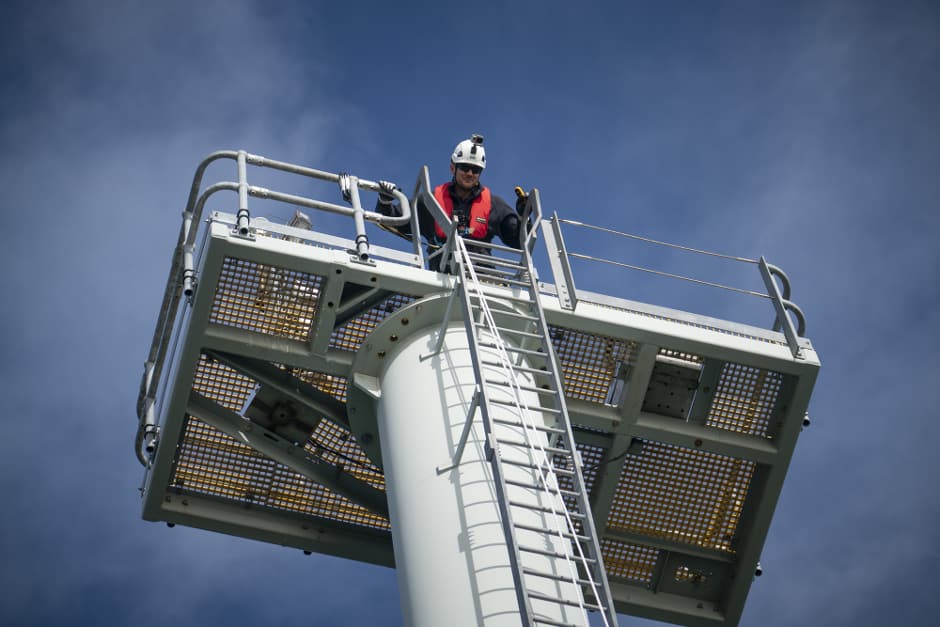
HMS Queen Elizabeth is coming home for Christmas but will need a little guidance into Portsmouth Harbour before her crew disembark.
To this end, 15 navigational aids mark the deep-water channel created for the aircraft carrier to manoeuvre safely.
Regular maintenance keeps the lights on top of the navigational aids shining brightly whenever HMS Queen Elizabeth enters or leaves the harbour and divers from BAE Systems have been tasked with the job.
More used to working up to 50m below water, seven members of the 14-strong diving team have qualified as climbers so they can scale the towers that are up to 30m tall and can sway by up to a metre.
“The team check the condition of the solar panels and batteries, ensuring they’re clean, free from guano and salt build up, and that the battery terminals are operating effectively,” said diving and maritime co-ordinator Jim Lynch. “We carry out planned maintenance on a six-monthly basis as well as regular checks to ensure they’re fully operational.”

This is a marked change to the divers’ normal routine of inspecting and maintaining almost five miles of sea walls around the historic naval base, including jetties, quay walls and berthing facilities as well as centuries-old culvert systems and service tunnels.
Lights on the navigational aids shine red, white and green to clearly show when the carrier is on the right heading, particularly entering and leaving the centuries-old narrow harbour entrance.
“The navigable channel is just 100m wide and, as the beam of the ship is 48m wide, these lights are absolutely critical to the carrier’s safe passage both into and out of the harbour,” said pilot Tony Bannister who, along with Captain Nick Cooke-Priest, will keep the carrier on course.
Radio-operated from Semaphore Tower in the naval base, the lights are switched on as soon as it’s confirmed that the carrier will be entering or leaving the harbour. The rest of the time they flash at low level to avoid other vessels colliding with them.
CLICK FOR A CANDID INSIGHT ON WHAT AWAITS HMS QUEEN ELIZABETH WHEN SHE RETURN HOME





IEA report claims batteries are ‘changing the game’
The weight and bulk of static batteries, even domestic units, is immaterial. The IEA's trilemma is illustrated here:-...